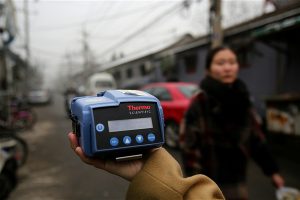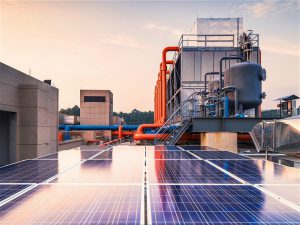China’s market for environment-related technologies has experienced very rapid growth in recent years. China’s tightening environmental policy is the central driving force behind this development. A case in point is the market for environmental monitoring.
The systematic gathering of information on enterprise emissions and eco-system conditions is the foundation of effective environmental policy. The policy-driven market saw a six-fold increase of sales of monitoring equipment between 2006 and 2015 (see figure 1). As China’s efforts for a clean environment are likely to continue, green technology will be a gold mine for the environmental industry for the years to come.
China’s environmental policy drives demand
To cope with the mounting environmental challenges, the Chinese leadership adopted a set of new policy measures. These include action plans to combat air, water and soil pollution and the revision of the Environmental Protection Law. In 2015, the Chinese government passed the new Air Pollution Law. This law was supported by an emphasis of government statements to tackle air pollution.
As part of these efforts, the government wants to enhance national monitoring networks. Five years ago, China had a highly fragmented monitoring network that was hardly able to assist in implementing and enforcing environmental regulations. The policy shift towards stricter environmental protection and more stringent regulations and standards led to an increase of sales for all categories of monitoring equipment: pollution source monitoring, water quality monitoring, air quality monitoring, sampling apparatuses and data transmission instruments.
The effect of government policy on markets is most visible in the area of air quality monitoring. In 2011, urban smog became a priority on the political agenda. Consequently, the sales of air monitoring devices tripled in 2012. First, the government released stricter regulations to reduce smog: According to the Ambient Air Quality Standards (GB3095-2012), limits for PM2.5, O3 and CO were added to the automated monitoring system from 2012 onwards. That led to a surge in sales (see figure 3).
Second, the government decided to improve the validity of the monitoring system by increasing the number of data points and the covered area. Before 2011, China did not have any network for monitoring particles smaller than PM2.5. In 2012, the national air quality monitoring network expanded from 113 major cities and 661 monitoring sites to 338 cities with 1436 monitoring sites.
Eastern coastal provinces are lead markets
The effect of government policy on the market for environmental technology is strong, but varies by region. Multiple factors contribute to the uneven market growth. These include disparities of economic development and the financial capacities of local governments, public awareness and varying degrees of public demand for a clean environment, and, of course, the degree of environmental pollution. Figure 4 shows that provinces with higher economic development and a very high degree of pollution have the largest local markets for environmental monitoring equipment. Subsequently, disparities of the environmental monitoring market are expected to continue as they are rooted in the uneven development between regions.
Policies likely to continue
Current policies and statements indicate that China is moving towards even tighter environmental regulations and stricter standards for environmental monitoring. In March 2016, environmental protection was high on the agenda at the National People’s Congress: Premier Li Keqiang promised to “step up efforts and conduct online monitoring of all polluting enterprises.” Chen Jining, Minister of Environmental Protection, announced that a series of strict environmental plans and policies, including new laws to tackle soil pollution, would be released soon.
Beijing sent clear signals that the market for environmental monitoring would be strongly supported by the government in the coming years. The “Program for Constructing the Ecological Environment Monitoring Network”, clearly states that China will establish a national unified real-time online environment monitoring system. This opens a new market for third-party environmental monitoring operations and maintenance.
Opportunities for cooperation between China and Europe
For Sino-European environmental cooperation, the growing market for environmental monitoring equipment and related technology creates huge opportunities. European suppliers of environmental technology can seize the growing business opportunities in China, while the quality of China’s environment could improve with the help of these foreign enterprises.
Reflecting the deepening cooperation, the export value of devices for monitoring, analysing and assessing environmental conditions from the European Union to China more than doubled between 2009 and 2014 (see figure 5). German suppliers in particular increased their sales to China. This growth is likely to continue. In contrast to many other industries, the market for environmental technology has so far not been affected by the downward pressure of the economic slowdown in China.







![The Indus at the site of the proposed Diamer-Basha dam [image by: Water and Power Development Authority, Pakistan]](https://dialogue.earth/content/uploads/2017/05/Indus_Diamer_Basha_Dam_Site_Image_WAPDA-300x169.jpg)